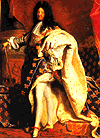The
Flemish language - "flamand"

|
A country divided It seemed to have taken several generations for people in the North to have accepted that they were part of France. Flanders had prospered under the Spanish and the Austrians. As recently as 1900 the everyday language of people in maritime Flanders was Flemish - "flamand", a dialect of Dutch - rather than French. (see map of language areas) |
|
|||||||||||
|
Slow death of the old language 1830 Belgian independence Although thrown together in one country by their Catholic religion, the Belgians were divided by language (see map of language areas). At the outset, there was a strong movement amongst the French-speaking Walloons in western Belgium to join France. French king Louis Philippe ignored them in the interests of European peace. In later decades there were movements of families in both directions across the Franco-Belgian border. Behind the French border, French gradually took over as the main language. Education and military service were strong influences giving young men particularly a French national identity. |
||||||||||||
|
||||||||||||
|
The legacy Today the Flemish language is virtually dead in northern France, but there is a body of local slang words called "Ch'ti", in which many Flemish words survive. Flamand has left behind a strong legacy in the form of many local placenames, like Steenwerck, Hondschoote, Cassel, Wormhout... There is a distinctive region cuisine - the north is also the only part of France where the preferred everyday drink is beer rather than wine. The north's carnival "giants" are a popular custom shared with Belgium and Spain. There is a small radio station broadcasting from Cassel that tries to revive the old language. But unlike other minority language groups, such as the Basques in Spain, or welsh-Gaelic in the UK, there is little popular response. |
||||||||||||
|
Places to
visit: |
|
|
Related background
information |
|
|
|
|
|
|
|
|
|
|
|
|
|
